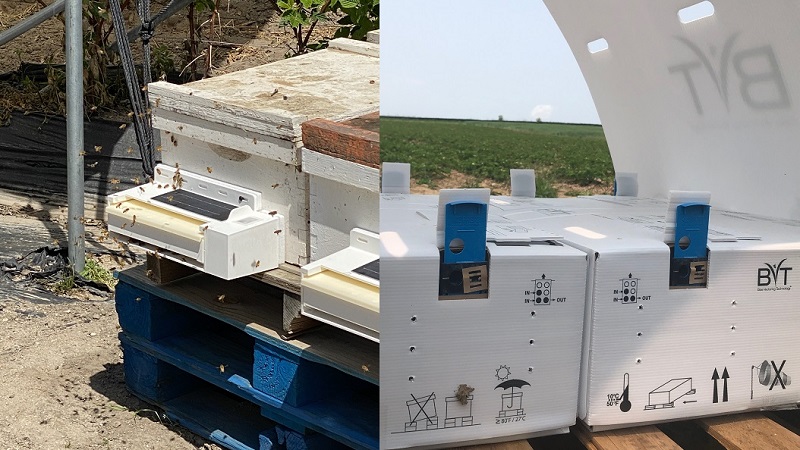EPA Approves Experimental Use Permit Of Spinach Trait To Fight Greening
In a landmark step in the fight against the disease (also known as HLB), the EPA has approved Southern Gardens Citrus’ (SGC) application for an Experimental Use Permit (EUP) under the Federal Insecticide, Fungicide, and Rodenticide Act. SGC, headquartered in Hendry County, FL, is one of the largest citrus producers in the state. All three of its Southwest Florida groves infected with HLB. Over the last several years, SGC has worked to find an efficient and effective solution to this very serious disease.
The EPA granted the new Experimental Use Permit to SGC on April 30. The EUP authorizes large scale tests of citrus plants containing the protein derived from spinach, which SGC has developed through a research program with Texas A&M University.

Transgenic trees (right) have performed well vs. non-transgenic trees in Southern Gardens Citrus field trials.
Photo courtesy of Southern Gardens
Consistent with the conditions established by the EPA, SGC may now move forward with field tests to evaluate the efficacy of the spinach protein against HLB in citrus plant tissues and continue generating the environmental, health, and safety data that are required under federal law to support a fully registered product for commercial use. On the basis of SGC’s related petition, EPA also concluded that residues of the spinach protein in citrus are safe for the public, and established a temporary allowance (known as a tolerance exemption) to cover this.
Ricke Kress, president of Southern Gardens Citrus, states that “since this disease was first detected in the company’s groves in 2005, the immediate decision was to become as proactive as possible to learn about the disease and at the same time, develop methods and procedures to deal with the disease on a day-to-day basis. The company directed a research focus toward spinach because it is already safely consumed daily and should be more favorably received by consumers. It is important to state that as all U.S. regulatory controlled field trials and evaluations are on-going, there is no citrus fruit or juice product from the tests in the commercial product market today.”
Kress notes that a final solution to eliminating this disease may still take some years, but the latest EPA action and continuation of all research projects are major steps in the right direction.










